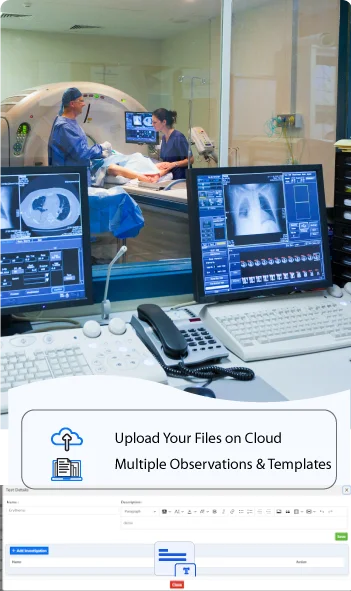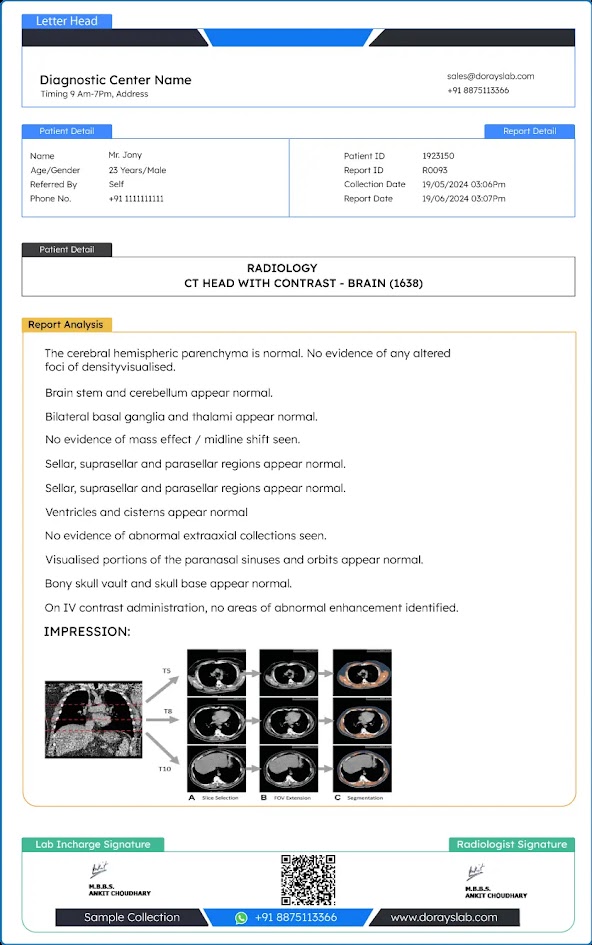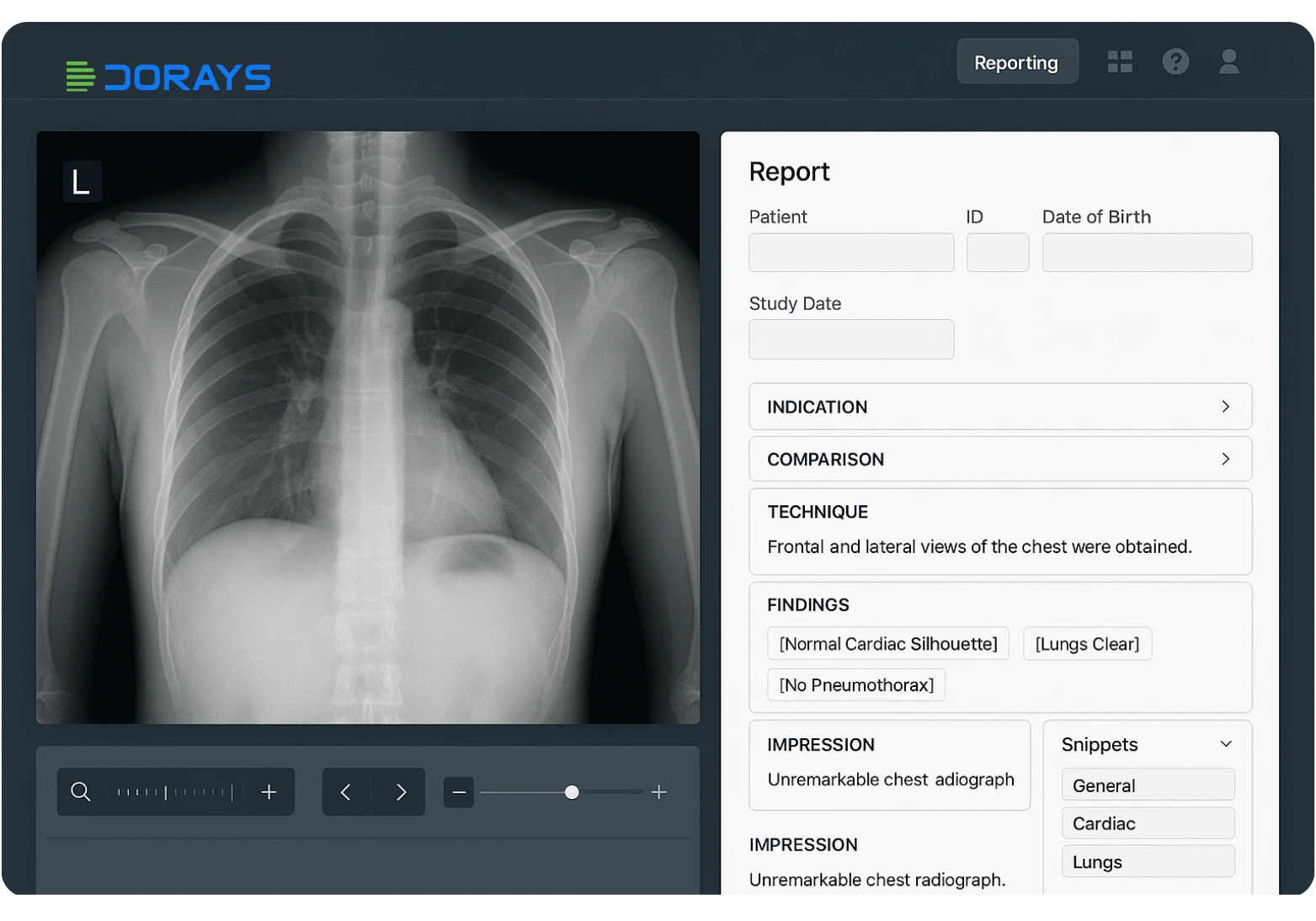Radiology Report Software
Radiology imaging is essential for diagnosing numerous health conditions. From early X-rays to advanced MRIs, radiology tests have greatly improved diagnostic accuracy. A key element in this process is the radiology report, which plays a crucial role in ensuring accurate diagnoses. The structure and presentation of these reports make a significant difference, which is why radiologists use a standardized radiology report format. Unlike regular pathology reports, the radiology report format has specific content tailored for imaging results. This standardization facilitates global collaboration among healthcare professionals, enhancing diagnostic accuracy and consistency. Moreover, having a uniform format helps in digitizing these reports, providing seamless access to patients and medical professionals worldwide. Here, we provide an overview of the most commonly used radiology report format along with essential guidelines. This standard format not only improves communication and efficiency but also ensures that radiology labs can deliver precise and reliable results to aid in patient care.

Dynamic Templates & Intellegent Snippet
Our radiology reporting templates are dynamic and easy to use, enabling you to customize the report view to your preference. With pre-written texts that adapt to keywords and speech-to-text reporting features, our system enhances the process, ensuring efficiency without delays.

Custom Radiology Report Formats
Create personalized radiology report formats effortlessly using our easy-to-use editor and pre-built templates. Our Radiology Report Software allows doctors to streamline the process, eliminating the need for setting up new formats each time and speeding up radiology reporting.
What is Radiology Reporting ?
Radiology reporting is the process of documenting and communicating the results of laboratory tests. These tests, ranging from blood tests to microbiology cultures, play a critical role in healthcare, aiding in the diagnosis, treatment, and monitoring of patients' conditions.
A lab report is a comprehensive document that includes details about the tests performed, the results obtained, and any relevant interpretations or recommendations. These reports are crucial for healthcare providers to make informed decisions about patient care.
Our lab software simplifies the reporting process, ensuring accuracy, efficiency, and compliance with industry standards. With our software, you can streamline your lab's operations, improve the quality of your reports, and enhance patient care.
Benefits from Our Radiology Reporting & Management Software
Custom Report Formats
Tailor reports to your needs for clearer insights and better decision-making.
Faster Sharing via Links
Instantly share vital information with colleagues or patients for swift collaboration.
Secure Communication
Ensure privacy and security with encrypted communication channels.
Feature-Packed DICOM Viewer
View medical images with advanced tools for detailed analysis and diagnosis.
Secure Patient Registry
Maintain patient records securely, ensuring confidentiality and compliance.
Cloud-Based Sharing & Deletion
Effortlessly share and manage data in the cloud, ensuring data privacy.
Improved Patient Coordination
Coordinate patient care efficiently with streamlined workflows and communication.
Enhanced Patient Care
Improve patient outcomes with better access to data and streamlined processes.
Improved Material Management
Optimize material usage and inventory with efficient management tools.
Types Of Modalities We Support In Our Radiology Reporting Software For A Seamless Reporting Experience

CT Scan

PET Scan

X-Ray

MRI

Sonogram

Fluoroscopy

Nuclear Medicine

Angiography
Radiology Report Format
Offering full customisations, such as personalized letterheads, font sizes, adjusted spacing, digital signatures, and much more!

Support for every problem
We'd love to help you resolve your problem.
SUPPORT
Frequently Asked Questions
We design our products in a way that makes software purchase decisions for our customers more value-based compared to traditional software companies.
Radiology reporting software is a digital tool that assists radiologists in creating, managing, and sharing radiology reports. It streamlines the reporting process, improves accuracy, and enhances communication with other healthcare providers.
Key features include template-based reporting, voice recognition, image integration, structured data entry, and seamless integration with PACS and HIS systems.
A typical radiology report includes patient information, imaging technique used, findings, impressions, recommendations, and the radiologist's signature.
Yes, radiology reports can be securely shared electronically with other healthcare providers, improving collaboration and patient care.
The software automates many aspects of report creation and management, reducing time spent on administrative tasks and allowing radiologists to focus more on patient care.

